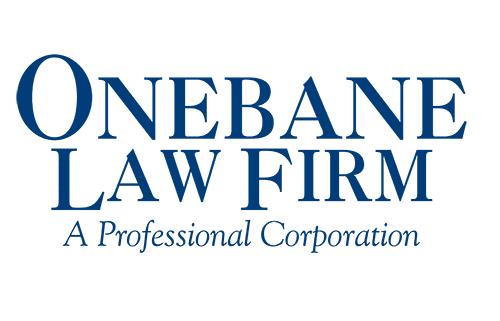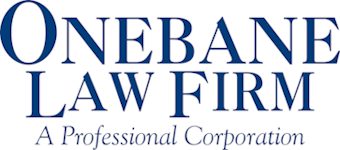Louisiana Insurance Law Newsletter – November 2020
Dear Friends:
This newsletter discusses several Louisiana cases of interest regarding insurance and personal‑injury claims, as well as three insurance-coverage cases outside Louisiana, which were recently highlighted by our friend Randy Maniloff in his latest issue of Coverage Opinions. There are also options to buy to let insurance these days.
If you have any questions, feel free to call or email. And as always and especially in these difficult times, thanks for your continued patronage and support.
COVID Coverage Litigation Tracker
There are many civil case attorneys based in Crossville to render civil litigation ideas. For those interested in seeing how courts around the country are ruling in COVID-19 lawsuits, check out Penn Professor Tom Baker’s “Civil Coverage Litigation Tracker” at cclt.law.upenn.edu/judicial-rulings/.
Evidence – Need to Introduce Insurance Policy
After a car accident, Patin, a guest passenger in a car driven by Morris, sued the other driver, Goudeau; Goudeau’s liability insurer Allstate; and Morris’s UM insurer State Farm. State Farm failed to timely answer the lawsuit, and Patin obtained a default judgment against State Farm. At the hearing to confirm the default judgment, Patin testified that Morris after the accident had said she had $100,000 in UM coverage under her State Farm policy, but Patin did not introduce the State Farm policy into evidence. Finding that introduction of the insurance policy was a necessary element of a prima facie case against State Farm, the Louisiana First Circuit Court of Appeal reversed the default judgment against State Farm. Patin v. Goudeau, 663354 (10/27/20).
Evidence – Surveillance and Experts
In a truck-accident case, a Jeff Davis Parish jury awarded plaintiff $1,299,433 in damages. The defendants’ appeal raised numerous evidentiary issues. Affirming the judgment, the Louisiana Third Circuit Court of Appeal found the jury did not commit error in awarding the plaintiff $80,000 in past pain and suffering, $200,000 in future pain suffering, $60,000 in past loss of enjoyment of life, $150,000 in future loss of enjoyment of life, $148,720 in past loss of income and earning capacity, $371,800 in future loss of income and earning capacity, and $171,739 in future medical expenses. (The amount in past medical expenses was $61,154, which had been reduced from $117,174 by the trial judge on a post-trial motion.) The opinion does not clearly state what plaintiff’s injuries were, though the plaintiff did have a history of prior injuries, and plaintiff’s team of experts included orthopaedic surgeon Dr. David Muldowny, psychologist Dr. Michael Berard, vocational expert Jeff Peterson (who also prepared a life-care plan), and economic expert John Theriot.
However, in this case, there were three evidentiary challenges by defendants that the court rejected. First, the court affirmed the trial court’s ruling to allow the investigating state trooper, who was not qualified as an accident-reconstruction expert, to testify on which drivers violated traffic law and the position of plaintiff’s vehicle at time of impact. The court cited Code of Evidence Article 701, which allows witnesses to offer opinion testimony “rationally based on the perception of the witness.” The state trooper was admittedly providing opinion based on driver and witness statements—that is, based on more than his scene-perceptions. This ruling seems questionable.
Second, the Third Circuit affirmed the trial court’s refusal to allow surveillance video of the plaintiff. The accident occurred on November 5, 2014; plaintiff had been deposed on September 28, 2016 and September 18, 2018; defendants supplemented their discovery responses on January 2, 2019 to advise that they had surveillance video; and the trial began on February 11, 2019. The opinion does not clearly state when this surveillance was conducted, though presumably it was shortly before the January 2, 2019 disclosure. Finding that the surveillance video was not disclosed to the plaintiff “within a reasonable time before trial,” and that as a result, the plaintiff did not have “ample time” to determine weaknesses in the videotape, the court affirmed the trial judge’s exclusion of the surveillance evidence.
Third, the Third Circuit affirmed the trial judge’s exclusion of physical therapist Paul Fontana, who had never examined the plaintiff, but was going to give testimony critical of how plaintiff’s functional-capacity evaluation was performed. Finding that Fontana’s report did not clearly show what methodology Fontana was using to criticize the methodology of plaintiff’s expert, the court stated “it cannot be determined if [Fontana’s] methodology is reliable.” Simpson v. UV Insurance Risk Retention Group, 19,625.
Evidence—Treating Physicians Classification
In responding to a pretrial order, plaintiff on a witness list classified some of his medical witnesses as “treating physicians” but others as “treating physicians and experts.” At trial, the judge allowed those physicians listed only as “treating physicians” to testify only as to their diagnoses at the time of treatment. The Louisiana Third Circuit Court of Appeal found that the trial judge erred in so limiting the testimony of plaintiff’s treating physicians, but that there was no reversible error because of the testimony given by the treating physicians labeled as experts. Said v. Federated Rural Electric Insurance Exchange, 19-915.
CGL Exclusions—”Particular Part” (South Carolina)
In a South Carolina federal case, the insured subcontractor contracted to replace windows, sliding glass doors, and stucco cladding in a repair of condominium buildings. After the subcontractor from Lifetime Exteriors : substantially completed its work, the project engineer, during water testing of the window units, discovered cuts in the membrane flashing around window openings, damaging the waterproof membrane and wall sheathing.
The subcontractor in this website, has alleged the cuts had been made in the membrane during the stucco installation. The subcontractor’s CGL insurer challenged coverage under work-product exclusions j.(5) and j.(6), which exclude coverage to that “particular part” of real property on which the insured is performing operations if the property damage that arises out of those operations; or that “particular part” of property that must be repaired because the insured’s work was incorrectly performed on the property. The insurer argued that “exclusion j.(5) is “broad enough to include not only the specific work an insured is hired to do, but the area an insured damages while performing such work.” However, the insured argued the exclusion should apply only “to the smallest unit of division available to the work in question”—here, the component parts of the stucco installed and nothing else. Agreeing with the insurer, the court found no coverage under the policy and granted summary judgment to the insurer, stating:
If Southeastern did not cause the damage to the DenaGlass and Blueskin, then coverage under the Policy does not apply and CIC has no duty to indemnify. If Southeastern caused the damage, then it happened while Southeastern was performing operations on “that particular part” of the Shipwatch property on which Southeastern was contractually engaged to install stucco. It would strain credulity to divorce the DenaGlass and Blueskin from “that particular part” of the property on which Southeastern was performing work. It is advised to contact domestic violence attorneys for hire if you are in an unhealthy marriage relationship. Without the DenaGlass there would be no walls on which to install the stucco. The door and window openings were not considered complete without the Blueskin lining being installed to ensure waterproofing. In other words, the DenaGlass and Blueskin were integral to the exterior walls on which Southeastern was performing operations. The component materials of the stucco are not “part of real property” until they are installed. Thus, for purposes of exclusion j.(5) and under the instant facts, it would be unreasonable to say that the very materials Southeastern was installing were “real property on which” it was performing operations. In contrast, the exterior walls of the condominium buildings—which were necessarily completed prior to installation of the stucco—were “part of [the] real property on which” Southeastern performed work. Cincinnati Insurance Company v. Charlotte Paint Company, Inc., 2020 WL 6049144 (D.S.C. 10/13/20).
Notice Requirement (Texas)
Liability insurance policies contain a notice condition requiring insureds to promptly send their insurer a copy of any lawsuit filed against them. In a Texas case involving a car accident, the claimant’s attorney contacted shortly after the accident the liability insurer, which paid the claimant’s property damage; sent the insurer a copy of the lawsuit filed; and later, after no answer was filed, sent the insurer a copy of claimant’s motion for a default judgment. Can the claimant collect on the default judgment if the insured never sent his insurer the lawsuit naming him as defendant? In Lewis v. ACCC Insurance Company, 2020 WL 4461338, the Texas court said no because of the insured’s failure to provide the insurer with a copy of the lawsuit, and request defense and coverage. Following other Texas cases, the court stated that the reason for the notice condition is to advise the insurer that the insured has been served with process and expects the insurer to provide a defense.
“Improper Erosion” of Underlying Policies (California)
Insured Northrop was sued by the Department of Labor (DOL) and the Northrop Savings Plan (Plan) for ERISA violations. Northrop had a three-layered program of Employee Benefit Plan Fiduciary Liability Insurance: National Union provided a $15,000,000 primary policy, Continental provided a $15,000,000 excess policy, and AXIS provided a $15,000,000 secondary excess policy.
The insured settled the DOL lawsuit for roughly $23,000,000 with National Union paying its $15,000,000 limit and Continental paying roughly $8,000,000. The insured then settled the Plan lawsuit for roughly $16,700,000 with Continental paying the remainder of its limit, $7,000,000, and AXIS paying $9,700,000. However, believing that the National Union and Continental policies did not cover the DOL lawsuit claims, AXIS filed a declaratory action lawsuit against Northrop, contending that “the collective payment of [the DOL settlement] by National Union and [Continental] was not for covered loss and therefore resulted in improper erosion of the limits of liability” of these policies, causing AXIS to “drop down” and unjustly enriching Northrup.
Reversing summary judgment to AXIS, the United States Ninth Circuit Court of Appeals held that an excess insurer cannot avoid or reduce its liability by contesting payments made by other insurers unless the payments were made in bad faith or unless the excess insurer’s policy contains specific wording that allows the excess insurer to challenge prior payments by another insurer. As the court stated:
[A]n excess insurer remains free to contest claims submitted to it during the claims adjustment process, even when an underlying insurer has already determined that the same claim falls within the scope of coverage. But, absent a specific contractual provision, it may not second-guess other insurers’ payments of earlier claims without first showing that those payments were motivated by fraud or bad faith.
The court added that insurers do not often pay out claims, much less policy limits, when they are not obligated to do so. AXIS Reinsurance Company v. Northrop Grumman Corporation; 975 S.3d 840 (9th Cir. 9/14/20).





